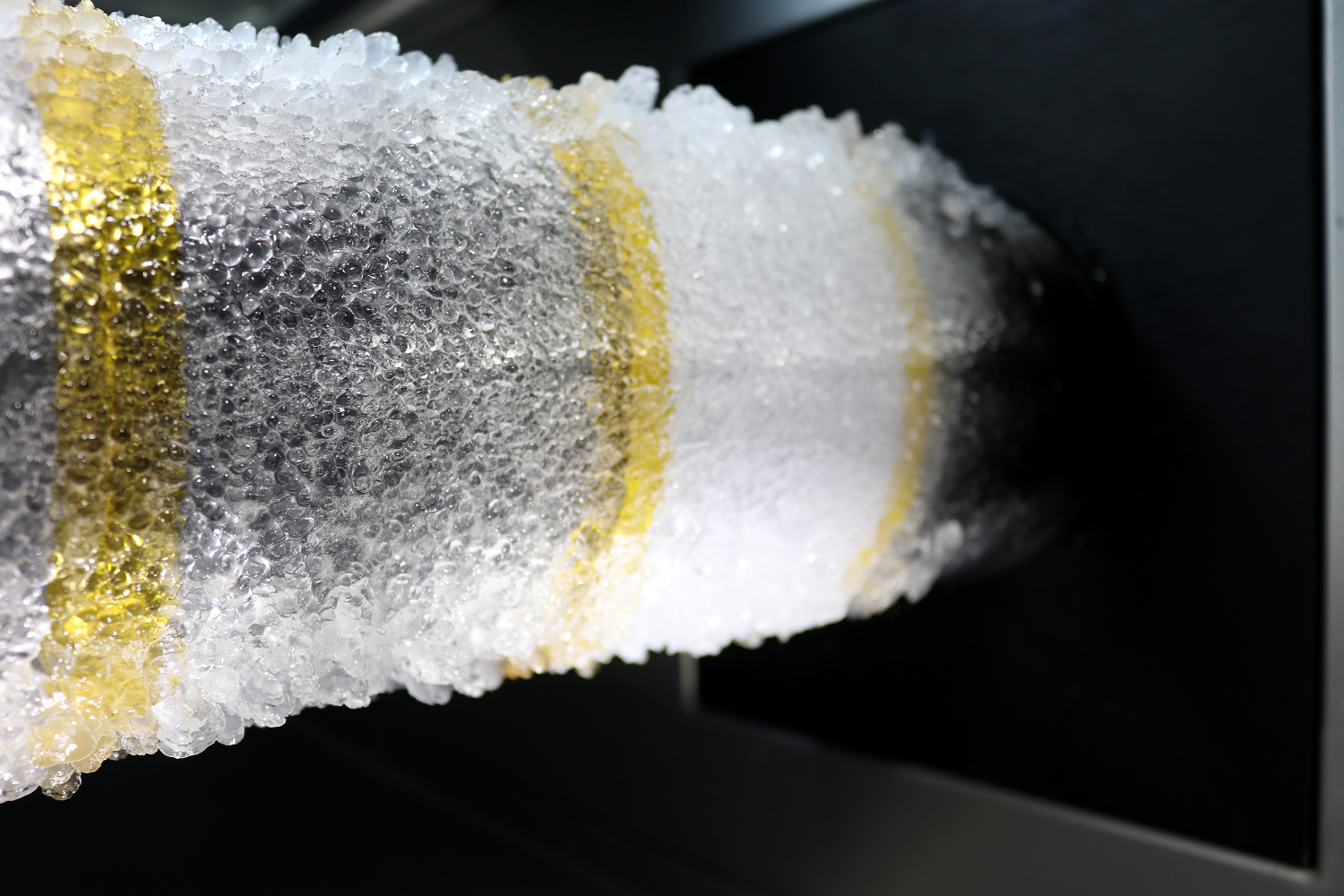Picture of the month: Wind power in snow and ice Investigations in the Braunschweig Icing Wind Tunnel by the Institute of Fluid Mechanics
Wind power plays a crucial role in providing an environmentally friendly, reliable and affordable energy supply. One challenge in the year-round uninterrupted operation of wind turbines is the icing up of the turbine by supercooled water droplets. In winter, ice build-up due to low-hanging clouds or fog is also possible at German locations. This has a negative impact on electricity production and operational safety. In the Braunschweig Icing Wind Tunnel, scientists are investigating how ice build-up can be prevented or how de-icing can be simplified.

Iced test cylinder with different microstructured foils in the Braunschweig Icing Wind Tunnel of the Institute of Fluid Mechanics at TU Braunschweig. Photo credit: Vickram Singh
When ice accumulates, wind turbines have to be shut down at most locations and can therefore no longer produce electricity. Ice build-up compromises the safety of the turbine – due to additional, unevenly distributed ice loads on the rotor blades, for example. And the area around the structure is also no longer safe – due to ice pieces that have been thrown off and have chipped off. Many turbines are therefore equipped with heaters on the rotor blades, the use of which naturally reduces the electrical power fed into the grid. By reducing the ice build-up or simplifying the de-icing process, it will be possible in future to increase the amount of electricity produced by wind turbines in winter.
Inspired by the lotus effect
To achieve this goal, the Institute of Fluid Mechanics (ISM) has joined forces with the company Coldsense Technologies GmbH and the Institute of Manufacturing Science and Engineering at Technische Universität Dresden. Together they have initiated the research project “MicroIce”. This project is investigating the influence of specially perforated plastic films with strong water- or ice-repellent properties, inspired by the lotus effect, on the formation of ice on wind turbines.
Simulation of a cloud
The first experiments have already taken place in the Braunschweig Icing Wind Tunnel, in which different foils were compared with each other. The Braunschweig Icing Wind Tunnel enables the simulation of a realistic cloud of supercooled water droplets with droplet sizes between 10 and 50 micrometres, which then hit a test body and freeze into ice there. The first results of the measurement campaign show that the films using the lotus effect can change the ice formation and significantly reduce the adhesion of the ice to the surface.
Authors: Inken Knop & Vickram Singh
